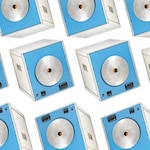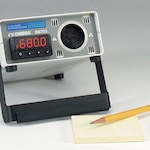A thermocouple is a thermoelectric device used to measure temperature. It works on the principle that when two dissimilar metals are joined at one end and exposed to a temperature difference, they produce a small voltage that can be correlated to temperature.
How Does a Thermocouple Work?
A typical thermocouple consists of two dissimilar metal wires joined together at both ends. One junction is placed in the medium or on the surface that is being measured—this is known as the hot junction. The other end, called the cold junction, is connected to a thermocouple-compatible device, such as a meter, a controller, or a transmitter, that remains at a constant, known temperature.
When the hot junction experiences a temperature change, the heat causes the electrons within each metal wire to move. Because the two wires that make up any given thermocouple are made from different alloys, their electrons move at different rates. This creates a measurable millivolt signal between the two conductors. The wire whose electrons move more freely develops a negative charge at the cold junction, while the other becomes the positive lead.
From this difference in potential, the device calculates temperature using a formula that converts the millivolt output into a temperature value.
Thermocouple Types and Ranges
Each thermocouple alloy combination (defined by the materials used) determines its temperature range and sensitivity. These combinations are standardized and represented by letter designations. The most common are the base metal thermocouples:
- Type J (Iron-Constantan)
- Type K (Chromel-Alumel)
- Type T (Copper-Constantan)
- Type E (Chromel-Constantan)
- Type N (Nicrosil-Nisil)
Among these, Type K Thermocouples are the most widely used due to their low cost, versatility, and wide temperature range, making them ideal for general-purpose temperature measurement.
Applications of Thermocouples
Since thermocouples are rugged, cost-effective, and reliable, they are used in a variety of industrial and commercial applications, including:
- HVAC systems
- Industrial ovens and furnaces
- Injection molding machines
- Food and beverage processing
- Manufacturing and laboratory testing

